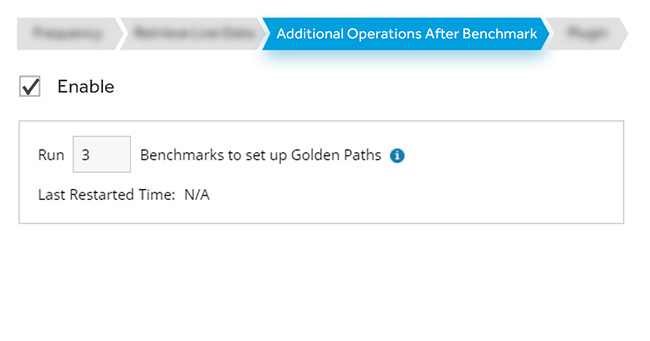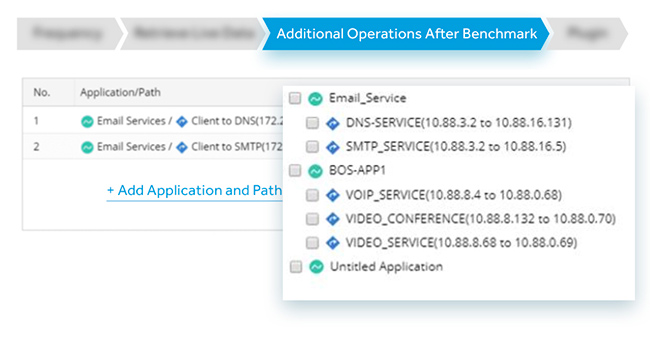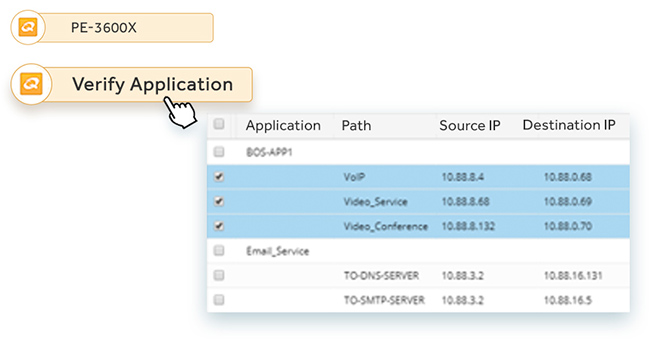Change Management Module
NetBrain’s Change Management module is a comprehensive solution for controlling a network change process.
Within a single Executable Runbook, network engineers can define a change, deploy the configuration updates, and verify the impact of the changes in a way that is fully auditable and adherent to existing business protocol and approval processes.
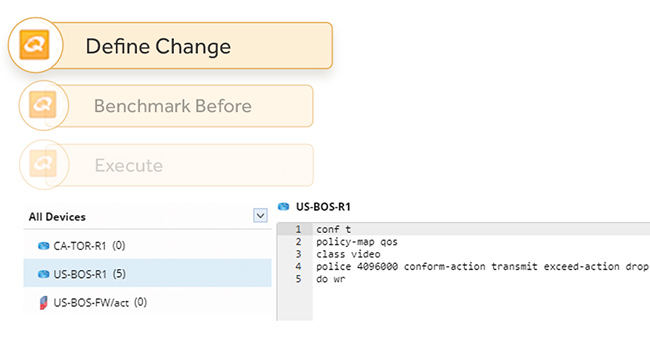 Define Change
Define Change
The Define Change node enables engineers to formulate and apply configuration changes to whichever devices are currently active on the Dynamic Map.
In addition, engineers can apply a change from a template, or apply different changes to various devices based on specific criteria.
For security purposes, once the change has been defined and approved, Define Change is locked and cannot be modified.
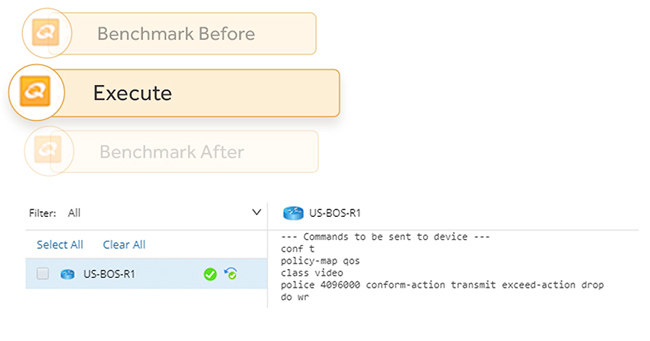 Execute Change
Execute Change
The Execute node allows engineers to sidestep writing complex and unreliable scripts to deliver updates.
When the Execute change node is activated, NetBrain will log into each device and issue commands in real time, in plain sight, for easy review.
If a change goes through inappropriately, it can be rolled back as quickly as it was executed.
 Verify Impact
Verify Impact
As part of the change management workflow, NetBrain can take a snapshot of the network both before and after deploying the configuration changes.
NetBrain becomes your Quality Assurance team, guaranteeing that you immediately spot any unexpected impacts resulting from any change.
These snapshots will provide comparative analysis to routing tables, configuration files, and even show commands – ensuring that no adverse conditions occurred because of the change.
In addition, at any point in the network change the user can add standard nodes into a Change Management Runbook to verify existing application and traffic flows, run diagnostic tools, leave notes for users, etc.
 Integrate with Existing Approval Processes
Integrate with Existing Approval Processes
For obvious reasons, many changes cannot be done at-will in a large enterprise environment. To accommodate this, NetBrain has included two methods of approving network changes:
First, NetBrain allows users to request approval from inside the application – the authorized user will be notified that a network change should occur via the chat window and is provided a link directly to the relevant map + runbook data.
Second, NetBrain enables third-party authorization tools to trigger approvals for network changes. (for example, a ticketing system like ServiceNOW), linking the ticket directly to NetBrain and updating the ticket as its status changes.
 Change Archive
Change Archive
NetBrain improves existing network change procedures by creating detailed documentation with a single click.
Impacted devices, execution logs, benchmark data, and more can be archived and referenced by future engineers should they need to review the change.
Ansible is a popular provisioning, orchestration and application deployment tool utilized by many different teams across an organization due to its variety of use cases and business applications.
Ansible Integration is an add-on feature to NetBrain’s existing Change Management module. Users can leverage the Ansible Task node to define and execute an ansible playbook, perform dry-runs of the procedure and record the execution results.
Most Ansible users will use SCM (Source Code Management) systems to manage their playbooks. NetBrain can also integrate with the mainstream SCM system, such as GitHub, to enable sync with existing playbooks.

Application Assurance Module
Business IT needs have evolved, and applications are at the core of any enterprise IT strategy. Understanding what applications and services will be impacted when an anomaly is detected within the network is critical.
NetBrain’s Application Assurance Module (AAM) is designed to manage paths based on applications and periodically verify the application paths to detect network changes. Applications and paths can be added manually within NetBrain, or by predefining the path in a CSV file and importing it into AAM.
Baseline Traffic Paths
It is essential to understand what a healthy network looks like, what key applications and services are critical to business operations and their critical path dependencies to minimize costly and unplanned downtime.
Understanding the baseline of critical paths or the Golden Path of expected traffic provides teams with the needed visibility and tools to dramatically speed up the time to resolution.
Critical application paths or Golden Paths can be set in the following ways:
- Draw expected path result on the map from Application Manager
- Automatically Set Golden Path based on benchmark
The System can be configured to analyze the results of a calculated path after benchmarks are run and auto set the Golden Path when requirements are met.
 Analyze Impacts to Key Traffic Paths
Analyze Impacts to Key Traffic Paths
Application Manager can also show the path verification results. The system compares both incoming and outgoing interfaces of devices at each hop along the current path and documents any differences found with the Golden Path.
Utilize this feature after any configuration or design change to verify no negative impacts have occurred to your critical applications.
Monitor and Verify Traffic Paths
Being able to proactively monitor and verify critical application paths enables teams to achieve a high level of agility required for today’s modern networks.
NetBrain can periodically monitor or verify the application paths and send alerts and emails when paths change.
Application paths can be added to a benchmark task so when the task is executed it will be verified.
Verification results can be viewed in Application Manager, exported to a CSV file or on a map clearly depicting the differences between current path and Golden Path.
During troubleshooting, users can verify application paths via the appropriate node and the system can automatically filter out the application paths related to devices on a map.

